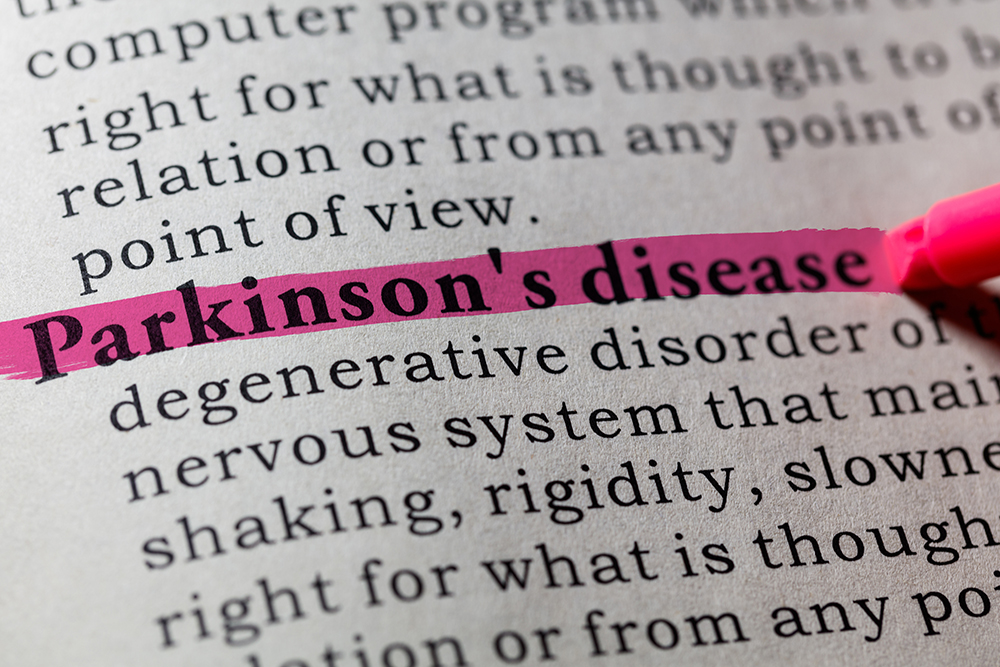By Michelle Strickland
Parkinson’s disease is a degenerative disorder of the central nervous system that affects movement and may cause tremors, rigidity, and difficulty with walking and balance. It is estimated to affect up to 1 million people in the United States alone.
Parkinson’s disease is more common in adults over 60, though it can also occur in younger adults. The exact cause of Parkinson’s is unknown, but risk factors include genetics, exposure to certain toxins or air pollution, and head trauma.
Aging adults should be aware of the signs and symptoms of Parkinson’s so they can seek medical advice. Healthy living habits like proper nutrition, exercise, and stress reduction may also help reduce the risk of developing Parkinson’s disease. Regular check-ups can help monitor any changes in condition, and early diagnosis and treatment of Parkinson’s can help slow the progression of the disease and improve quality of life.
It’s important to note that the presence of symptoms doesn’t automatically equate to a Parkinson’s diagnosis—only a medical professional can make that determination. The following list of symptoms is meant to raise awareness so you can speak to doctors about concerns for yourself or a loved one.
Recognizing the Warning Signs
Early warning signs of Parkinson’s include tremors, stiffness or rigidity of muscles, slowed movement or gait disturbances (including shuffling steps), poor posture or balance problems, fatigue, soft speech (hypophonia), and difficulty swallowing. These symptoms may worsen over time if left untreated. Let’s examine some of the signs and symptoms that can come with Parkinson’s disease.
Tremors
Tremors are one of the most well-known and recognizable symptoms of Parkinson’s disease. However, not all tremors are indicative of Parkinson’s disease, and not everyone with Parkinson’s disease experiences tremors. Tremors can be caused by various factors, including essential tremor or medication side effects, so it’s important to get a proper evaluation by a healthcare professional to determine the cause of your tremors. The tremors associated with Parkinson’s disease typically start on one side of the body and may progress to the other side over time. They are often described as a “pill-rolling” tremor, where the thumb and forefinger rub together in a circular motion.
Loss of Facial Expression
Loss of expression in the face is a symptom of Parkinson’s Disease. This can result in an inability to smile, frown or make other expressions associated with emotion. In addition, people with Parkinson’s disease may experience tremors in the face, causing it to appear stiff or rigid. The loss of facial expression is not only distressing for those affected but can also be difficult for friends and family members who cannot gauge their loved ones’ emotions through their faces.
Reduced Blink Rate
Reduced blink rate is an early warning sign of Parkinson’s Disease. People with this condition may have difficulty controlling the muscles responsible for blinking, resulting in a noticeably slower blink rate than average. Those around them can often observe this, and it is one of the earliest signs of the disease. In addition to reduced blink rate, people with Parkinson’s Disease may also experience difficulty controlling their facial muscles, leading to a loss of expression in their face and/or stiffening or tremors on one side.
Difficulty Smiling or Frowning
Difficulty smiling or frowning can be another early warning sign of Parkinson’s Disease. People may have difficulty controlling the muscles responsible for facial expressions, leading to a lack of expression on the face. This presents as difficulty smiling or frowning and can be observed by those around them. In addition to difficulty expressing emotion through facial expression, people with Parkinson’s Disease may also experience trembling or stiffness on one side of their body.
Reduced Eye Contact
Reduced eye contact is another potential early warning sign of Parkinson’s Disease. People with this condition may experience a decrease in their ability to make and maintain eye contact. This symptom is often the result of movement disorders associated with Parkinson’s Disease, such as reduced blinking or difficulty controlling the muscles that allow us to focus on particular objects.
REM Sleep Disorder
REM (Rapid Eye Movement) sleep disorder can be a symptom of Parkinson’s disease. In fact, it is one of the most common non-motor symptoms of Parkinson’s disease. REM sleep disorder is a condition in which people act out their dreams while they are asleep, sometimes violently. In Parkinson’s disease, this disorder is believed to be caused by the degeneration of the brainstem’s structures that regulate REM sleep. The symptoms of REM sleep disorder can appear years before other symptoms of Parkinson’s disease, and it can be an early warning sign of the disease. It’s important to note that not everyone with REM sleep disorder develops Parkinson’s disease, but people with Parkinson’s disease are more likely to have REM sleep disorder.
Changes in Cognitive Abilities or Behavior
Changes in cognitive abilities or behavior are common for individuals with Parkinson’s Disease (PD). These changes can range from mild to severe, including difficulty making decisions, trouble concentrating, memory problems, confusion, and impulsivity. These changes can sometimes be so severe that they interfere with daily activities such as driving or managing finances. It is important to recognize these changes early on to prevent them from worsening over time.
Stiff, Inflexible Muscles and Joints
Loss of flexibility in muscles and joints is a common symptom of Parkinson’s disease and can severely impact quality of life. Loss of flexibility occurs when connective tissues, such as ligaments, tendons, and muscles, become stiff or rigid. This can cause difficulty in everyday activities such as walking, climbing stairs, reaching for objects, or tying shoelaces. The primary cause of loss of flexibility is damage to the neurons in the brain responsible for motor skills. However, environmental factors such as air pollution have been linked to an increase in Parkinson’s symptoms, including decreased flexibility.
Diminished Olfactory Ability (Loss or Reduction in Smell)
Diminished olfactory ability is a condition in which an individual has lost or reduced their sense of smell. This condition can be caused by physical damage to the olfactory nerve or the nasal passages, such as a head injury, nasal polyps, or sinus infection. It can also be caused by medications or diseases such as Alzheimer’s disease, Parkinson’s disease, and Multiple Sclerosis. Common symptoms of diminished olfactory ability include an inability to smell certain odors and a decreased appreciation for food-related smells. Other signs include difficulty recognizing smells that are typically familiar and a lack of response to pleasant aromas such as perfumes or flowers. In some cases, people may experience phantom smells (olfactory hallucinations) that do not originate from any external source.
Constipation
Constipation is a common non-motor symptom of Parkinson’s disease. It is estimated that up to 80% of people with Parkinson’s disease experience constipation at some point during the course of their disease. Constipation is caused by a slowing down of the digestive system, which may be a symptom of degeneration of the nerve cells in the gut that produce dopamine, a neurotransmitter also affected by Parkinson’s disease. It’s important to discuss any symptoms of constipation with a healthcare professional, as untreated constipation can lead to complications such as fecal impaction or bowel obstruction.
Anxiety and Depression
Anxiety and depression can be symptoms of Parkinson’s disease. In fact, depression is one of the most common non-motor symptoms of Parkinson’s disease, affecting up to 50% of people with it at some point during their illness. Anxiety is also a common non-motor symptom, with up to 40% of people with Parkinson’s disease experiencing symptoms of anxiety. The physical changes in the brain that occur in Parkinson’s disease can lead to depression and anxiety as a result of flux in the production of neurotransmitters.
Seeking Diagnosis and Treatment
Some of the early symptoms of Parkinson’s disease can be subtle and may go unnoticed, but it’s important to be aware of them and to seek medical attention if you experience any signs of the disease. Here are some reasons why it’s crucial to get checked out if you show any signs of Parkinson’s disease:
Early diagnosis can lead to better treatment outcomes.
There is currently no cure for Parkinson’s disease, but there are medications and therapies available that can help manage the symptoms and slow down the progression of the disease. However, these treatments are most effective when they are started early in the course of the disease. By getting checked out as soon as you notice any signs of Parkinson’s disease, you can begin treatment earlier and potentially experience better outcomes.
Early diagnosis can help you plan for the future.
Parkinson’s disease is a progressive condition that can significantly impact your quality of life. Early diagnosis can give you and your loved ones more time to plan for the future, make important decisions about your care, and take steps to prepare for the changes that may come with the disease.
Some symptoms of Parkinson’s disease can be caused by other conditions.
Not all symptoms of Parkinson’s disease are unique to the disease, and some can be caused by other conditions. For example, tremors can be caused by various factors, including essential tremor or medication side effects.
It can be easy to overlook Parkinson’s non-motor symptoms.
While tremors and other motor symptoms are often the most well-known signs of Parkinson’s, the disease can also cause a range of non-motor symptoms, such as sleep disturbances, constipation, anxiety, and depression. These symptoms may be easily overlooked or attributed to other causes.
You can get support and resources to help you manage the disease.
Living with Parkinson’s can be challenging, but many resources and support groups are available to help people with the disease and their families.
If you or a loved one show any signs of Parkinson’s disease, early diagnosis and treatment can lead to better outcomes, help you plan for the future, and ensure you receive the appropriate care and support to manage the disease. By speaking with a doctor and receiving a proper diagnosis, you can connect with these resources and receive the help you need to manage symptoms and maintain your quality of life.





